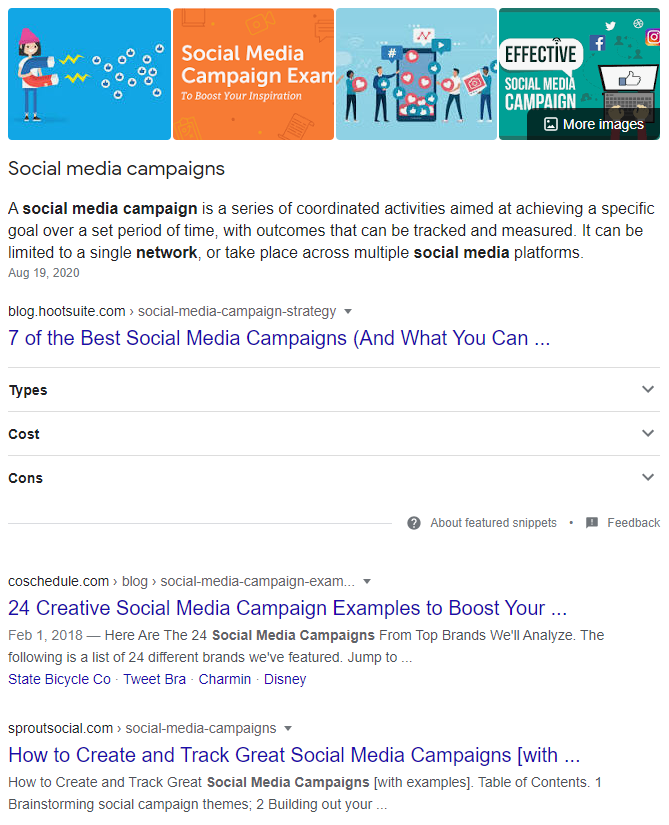You’ve probably heard of content marketing lately, but you’re not quite sure what it’s all about. Well, it is a type of digital marketing in which you create relevant content for customers and potential customers. In this way, it is responsible for providing relevant and useful content as the basis of its strategy. The user gets with this strategy to solve problems, communicate values, position your website and increase sales. That is why one of the winning horses of this strategy is to have good content. It is therefore essential to know how to write a good blog post and optimise it as much as possible.
Índice
Índice
What is the correct structure of an entry?
We are aware that when we want to start writing a blog post we all have doubts about how we can do it in an optimal way. This is difficult to measure at a global level, as there are many parameters to know if your post is correct or not.
From the point of view of the structure of a blog post, there are certain keys that will make search engines give us more authority and therefore, we reach a greater number of people.
Below, we develop a few ideas for you to get your posts to be read:
Length of your title or H1
The title is of vital importance when it comes to reading a blog. It is true that making your title attractive is very important and you can even help yourself with certain graphic elements.
Even so, you should not lose sight of the words they have. Titles with between 10 and 13 words are considered better because they receive more traffic and, therefore, are more shared.
To make those titles more interesting, we give you three main tips, which it is usually correct to check in this order:
Check the search engine SERPs
Search Engine Result Pages (SERPs) refer directly to what we know as the search engines or Google search results.
We consider it a very good practice to check the search engines before writing a post. This will let us know what topics are being written about the idea we have if that idea is a good one and how people are getting to that idea.
For example, if we want to write about social media campaigns, we should go to the search engines and see how they are being positioned by those search engines.
 Through this search, we have managed to find out what are the topics that are usually searched related to social networks and to place our blog post where we have assumed that it would be better to reach it.
Through this search, we have managed to find out what are the topics that are usually searched related to social networks and to place our blog post where we have assumed that it would be better to reach it.
Get relevant or highly searched topics
We may think that our topic is a great topic, but then realise that it has very little relevance in terms of the number of searches. There are a number of apps that can help us see how many searches certain topics receive. Obviously, there are many paid apps that give you much more data. We recommend these applications in many cases for larger topics than these.
For something basic like simply looking at the volume of searches for a word, we can resort to a free application such as Ubersuggest, an application with 3 free searches per day by the famous Neil Patel, which can be perfect for you to start to write a good blog post.
Choose good Keywords
At this point, when you have already decided on the topic and you have looked at the searches, you should try to find some specific keywords for your topic. You have to know that they must be representative and that they will define your content. If you choose them well, it will be a great help to search engines.
Within the Keywords, we must know how specific we want to be with our topic and this will lead us to differentiate two types of Keyword:
- Short Tail Keyword or Short Tail Keywords: This means that they are Keywords selected for more global topics. They can be good for topics that do not have a large search volume and in which there is less competition, so we can position with them.
For instance could be the Keyword “Blog content”, it we would position it for all general searches that talk about blog content. - Long Tail Keyword or Long Tail Keywords: Here we go to the opposite side of the previous ones, they are longer Keywords, for highly searched topics and in which the competition would make it difficult for us to the position with short words.
In this case, the Keyword example for a topic similar to the previous one would be “Blog content for SaaS companies”. With this, we would be positioning specifically specific content for the blog.
Content organisation
We must understand that most of the time when we publish an article, the decider of how it is going to be positioned is usually an algorithm or artificial intelligence that will analyse our content. By this, we mean that the simpler you make it understand what you are talking about, the more chances you will have to position your content well.
To have an optimal organisation of your content, we recommend the use of H2-H3-H4 titles. These titles simply make our content better organised and we can label each paragraph correctly. On the other hand, it is always good to try not to have a large amount of content in each section or title. That is, if you have generated a 500-word H3, it is better to divide that H3 into two sections formed by H4.
Generate content in the form of lists
Lists are highly recommended by search engines like Google. It is content that they consider to be very well structured, organised and that usually leads to short and direct answers to the aspects that customers are looking for.
For instance, if we have a specific topic such as “Doing sweepstakes on Instagram” that can be related to a list search, Google will rank this content first:
 Number of words in the post
Number of words in the post
There is no clear answer as to how long a post should be and it will also depend a lot on the topic you want to comment on.
If we talk about the number of times blog posts are shared in relation to their size, we can observe that there is a certain directly proportional relationship between the number of words a post has and the number of times it is shared.
From our point of view, there are several different approaches to blog content.
Many times blog posts have a shorter subject line and can be targeted for SEO. So around 1200 words would be more than enough content for this.
On the other hand, sometimes write blog post become master classes on how to do certain things. That’s why those that exceed 3000 words are the ones that seem to be the most shared and viral.
Our advice is to mix both actions. It is not always necessary to create extensive content, as it requires a great deal of dedication. Many times customers are looking for more concise and direct explanations, so generating a shorter blog post can also have a great impact.
Tips for writing content
Duplicate content, whether internal or external, has a very negative effect on your organic positioning. To avoid it you can use tools, such as Plagiarism Checker, which detects duplication from your content online.
In addition to this, also take note of the following tips that we offer below:
Put yourself in the consumer’s head
When you start writing the content you want to write in your blog post, you must take into account that you must explain it to a specific audience.
It is not the same to explain one topic as another when it comes to adapting it to your potential customers. For a topic that is more specific, you should explain it a little simpler so that it is readable for any type of audience. On the other hand, a topic that is more familiar to your target audience should have a lot of research behind it to provide readers with relevant information.
It is key that you generate the feeling of time well spent reading your content. Customers hate to feel that you are wasting their time.
Insert CTAs or calls to action
As a company, you must be clear that writing a relevant post, the subsequent work of monitoring, positioning and other tasks, takes time and should not be in vain.
The content you write on your blog should be relevant and convertible. By this, we don’t mean that every blog post should be translated into money, but that it can be converted into any kind of tangible or intangible.
Calls to action (CTA) are a common practice so that your customers can leave you their email or some method of contacting them for further content. These CTAs express that the customer liked your content and would be interested in knowing more about what you are going to tell them.
You have just gained their trust… Is that not enough?
Apart from that, you already have a lead conversion, which means that you are going to be able to contact that customer if it is sustained in the long term and maintain a relationship with them.
Take care of that customer, communicate with them if they need help and even ask them what their concerns are and if you can write something that will help them.
Multimedia content
The inclusion of videos and images when write blog post is an essential aspect when articles are very long. Apart from the visual power of putting infographics or explanatory videos inside the posts, they also generate an impression of relieving the content that is often too dense.
Try to ensure that the images or video always have their characteristics well labelled and an alternative text appropriate to the text.
It is also very important the choice of your featured image in the blog post, as often an attractive image or one that is well-aligned with your content will generate great advantages.
Get links
Within the work of the entry for its positioning, it is very important that you manage to generate backlinks, both internal and external.
Internal links are links that point to your own page, this will help you to keep them coming back to your content and reading more of you.
External links are those that point from another page to yours or vice versa. These links are great for gaining page authority. This makes Google see that the page is trusting your content so it validates and gives you its reputation.
Final conclusions
As we have seen, write a blog post is not as easy a job as it seems. Many companies simply put their time into writing the content and uploading it to the web. This practice is not enough if you want to be read.
Nowadays, the web is a veritable content battle. It’s almost impossible to find a piece of content that someone else hasn’t written before you, so you have to prove that your content is better than anyone else’s. That’s why Google has its own algorithms.
That’s why Google has its algorithms to know which content is more elaborate than others, more focused on thinking about the customer and, in conclusion, more valid.
In conclusion, our final advice is to be meticulous, go beyond simply writing and try to adapt to the algorithms. We know that there is a lot of good content out there on the web that is not optimised to rank high in SERPs. What will happen to your post is that it will be forgotten. If you need help to make your content more relevant and get the audience to reach it, do not hesitate to contact us and we will help you.



